We have much more to do and your continued support is needed now more than ever.
Education Newsletter Spring 2023
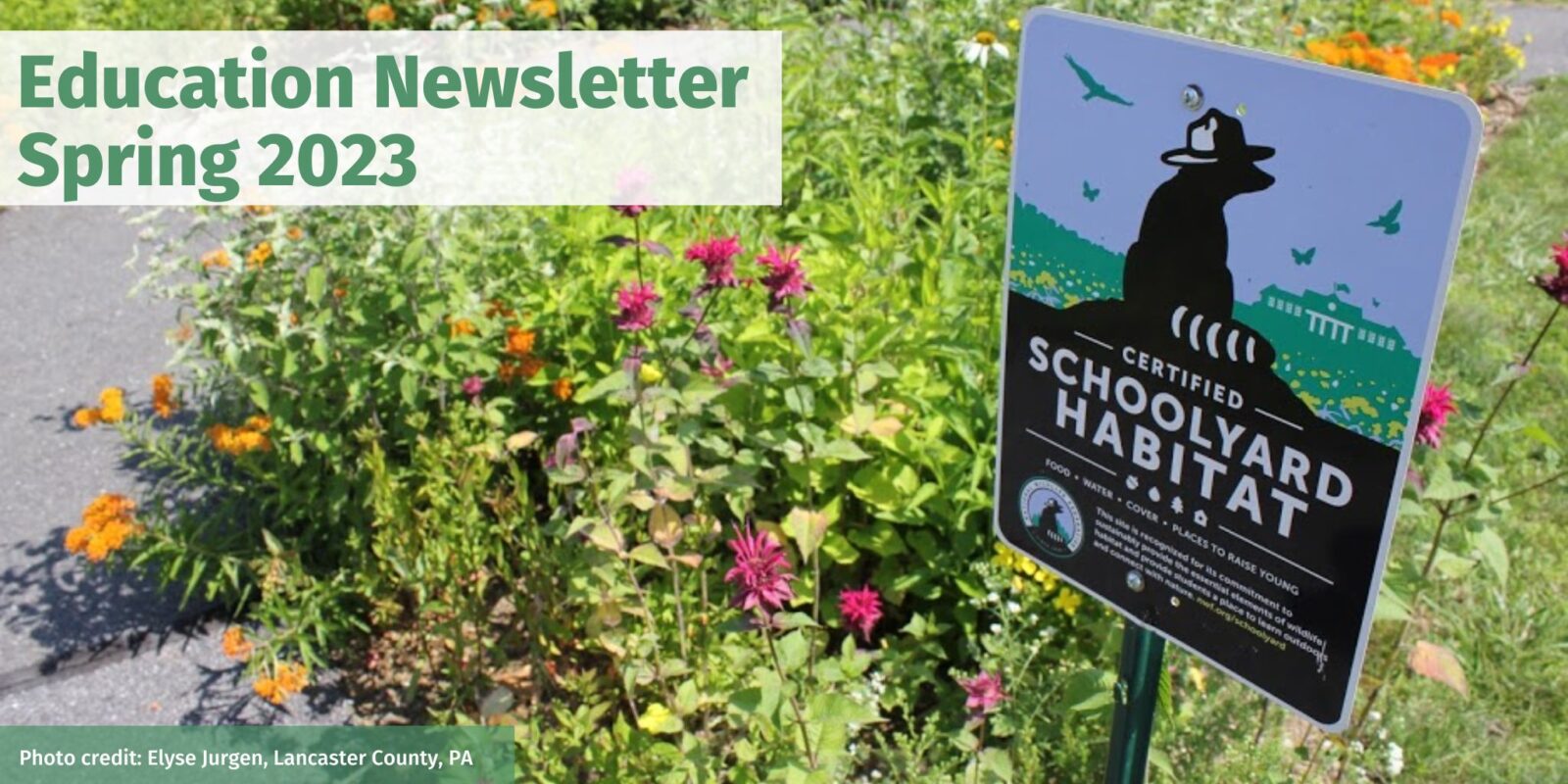
Hello, from the National Wildlife Federation’s Education Team
What if every school provided equitable access to nature that supports children’s well-being, learning, and unstructured play while contributing to community engagement and climate resilience? What if these same spaces could enhance biodiversity and help to support local wildlife while creating environmentally engaged students! At NWF this defines our longstanding Schoolyard Habitats® program. Since 1996, over 10,000 schools, preschools, and learning and nature centers have certified their schoolyard habitats through the National Wildlife Federation creating habitat for wildlife, access to green space, and outdoor classrooms for learning.
With summer just around the corner, let’s celebrate this and every school’s daily successes and enthusiasm for bringing nature and environment-based education to youth in the classroom and into the local community. The success across the National Wildlife Federation’s Education Programs reflects your dedication to the work.

Keep reading to learn how NWF’s Schoolyard Habitats® program has transformed school grounds into vibrant, living resources for learning and community resilience. See how schools have utilized NWF’s Eco-Schools program to support schoolyard habitat certification. Read some of the stories of success and get inspired by fellow educators who contributed their time and expertise to a series of webinars around the Schoolyard Habitats® Planning Guide.
— Kath Race, Senior Coordinator, NWF’s Education & Engagement
Ten Thousand NWF Certified Schoolyard Habitats® and Counting!
It’s been over 25 years since the National Wildlife Federation started working with schools as part of a program to specifically create and restore wildlife habitat on schools’ grounds. Since then, the movement has gained momentum, with over 10,000 and counting National Wildlife Federation certified Schoolyard Habitats®. These schoolyard habitats not only attract wildlife, but serve as a place where EVERY student has the opportunity to connect with nature in an outdoor learning space. This milestone happens to coincide with the 50th Anniversary of the National Wildlife Federation’s Garden for Wildlife™ program. Everyone is invited to join the celebration—this list of 5 ways to celebrate is a good place to start. Keep an eye out for upcoming webinars, and follow @GardenforWildlife on Instagram for more ways to join the fun.
Stories of Transformation
Students, teachers, families, and community volunteers have transformed bare courtyards, patches of grass, and even urban rooftops and empty lots into thriving green spaces for learning and restoring habitat for wildlife. Many of these stories have been captured here on the National Wildlife Federation blog. The results reflect how each school has a unique approach to its design and implementation.
Here are but a few stories and photos showcasing schools in action and demonstrating the unique vision, breadth and depth of their work.
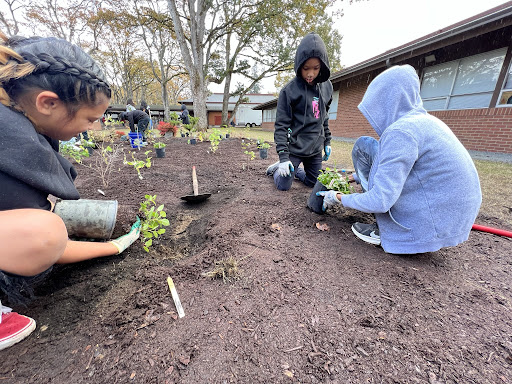
Credit: NWF
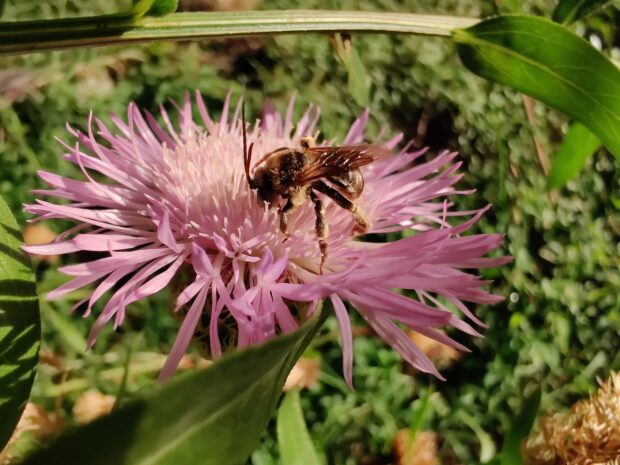
Credit: Kimberly Boyce-Quentin
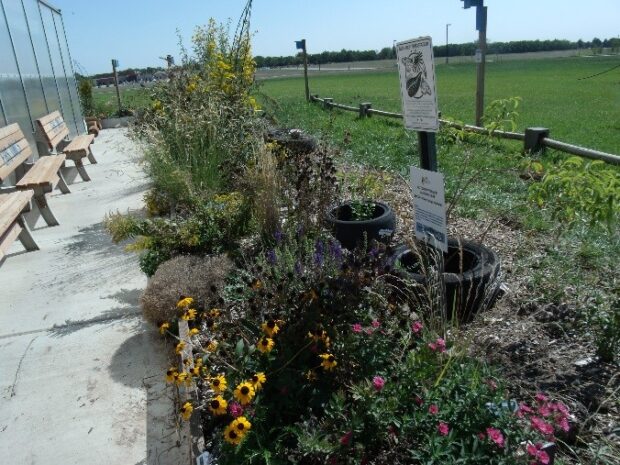
Credit: Denise Scribner, teacher, Eisenhower High School USD #265
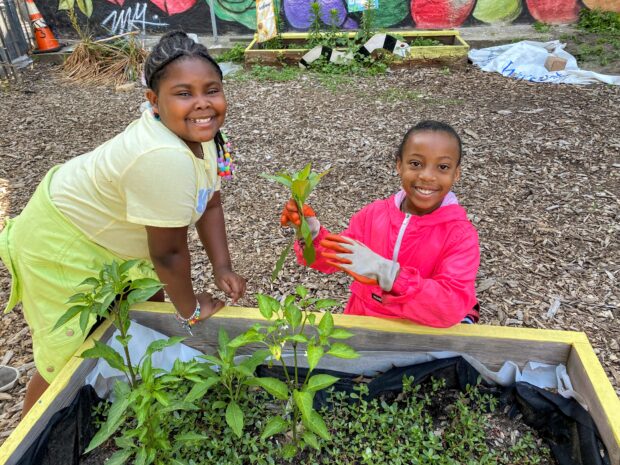
Credit: Jeanne Salchli

Credit: Morgan Parks

Credit: María Elena Garcia
- In 1996, Lee Elementary School in Austin, Texas became the first school certified under the NWF Schoolyard Habitats® program in the state. Fast forward to 2020, when they began to participate in the Monarch Heroes Program.
- Starting in 2011, Eisenhower High School in Kansas used a four-phase approach to construct their on-campus Outdoor Wildlife Learning Site (O.W.L.S.). Read their story to see how they tackled each phase of the project.
- In 2016, Skyview Junior High School in Washington was the first Eco-Schools USA Green Flag School west of the Mississippi River. They created a 6.5 acre outdoor learning classroom which included native plants and owl houses. More recently in Washington, Lochburn Middle School 6th and 8th grade science students installed over 90 native plants to benefit wildlife, while Wildwood Park Elementary created an NWF certified Schoolyard Habitat and edible garden.
- At Delaware’s Forwood Elementary School, another Green Flag school, one thing led to another when a classroom discussion about where food comes from led to the installation of a vegetable garden that benefited the entire school.
- A pollinator-focused habitat at an Oregon junior high school provides opportunities to discuss the importance of native species. Plus, the outdoor space is often used as an alternative to the indoor classroom setting. Find out how Brixner Junior High overcame obstacles along the way including obtaining funding for their garden.
- At P.S. 250 in Brooklyn, students created 3D models of pollinator gardens as part of the design process for their urban garden.
- In the Miami-Dade County Public School district, funds and plant donations from community partners allowed students and staff to create a native plant rain garden along with a Pine Rockland garden, modeled after the demonstration garden previously installed at Royal Palm Elementary (an Eco-Schools USA Green Flag school). Read more about the transformation from grass to a Pine Rockland Habitat demonstration garden.
- In 2021, Piney Point Elementary in Texas, a twice-awarded Green Flag school and another Monarch Heroes participant, had to rebuild and restore their garden after Winter Storm Uri severely damaged six years of hard work. Learn how they approached this setback and why the garden was an important part of the healing process.
- In Georgia, students at Oak Grove Elementary School used funds from a grant award to restore the 30 year old Birdsong Nature Trail as part of an Earth Day celebration. In addition to the curricular connections, students utilized data from the Great Georgia Pollinator Census to determine which plants to add, and wrote letters to local businesses for donations.
- As part of the GM Eco-Green Program, Achieving College & Career Education (ACCE) High School in Michigan, already an NWF certified Schoolyard Habitat, is building a memorial, native garden in their courtyard to bring celebration, closure, and healing to the student body.
In addition, programs like Monarch Heroes in Texas also support the creation of schoolyard habitats. Since 2015, over 230 gardens have been created to support wildlife and in particular, the Monarch butterfly. Over 80% of teachers reported seeing a moderate to significant increase in student engagement and motivation in science as a result of their program participation. A bilingual version of the Monarch Mission curriculum was created specifically for the Monarch Heroes program that is aligned to both the Texas Science Essential Knowledge and Skills (TEKS) and English Language Proficiency Skills (ELPS) for PreK-5. Watch the short video Build A Schoolyard Habitat | Be a Monarch Hero for inspiration!
How Can You Get Involved?
What does it take to certify at school? Required elements for certification include food, water, cover, places to raise young, and sustainable practices. Work towards a goal of 50-70% native plants. The National Wildlife Federation Schoolyard Habits® Planning Guide provides a step-by-step process to help plan, build, and maintain your new habitat on the road to certification. This guide was updated in 2021 with Green STEAM connections and detailed case studies.
Be sure to watch the Schoolyard Habitats® Planning Guide webinar series to learn and gather inspiration from teachers who are successfully utilizing outdoor learning spaces.
Other Ways to Get Involved
Have you heard about the Living Schoolyards Act (S-4993)? According to Green Schoolyards America, the bill will “direct important federal resources towards transforming school grounds into living schoolyards—richly layered outdoor environments that strengthen local ecological systems while providing place-based, hands-on learning resources for students of all ages.” Catch up on the Living Schoolyards Act Lecture series by watching the recorded webinars. Students can join the movement by using a free Student Advocacy Kit.
What We Are Reading
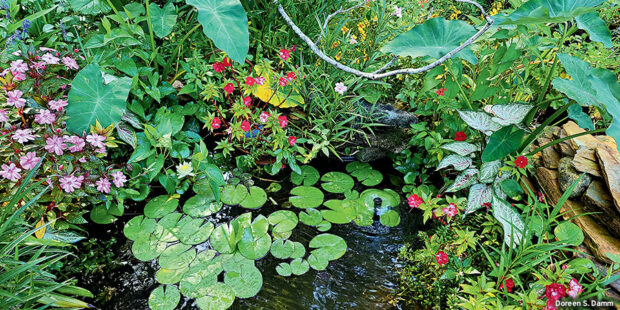
The Spring Issue of National Wildlife® magazine is here!
- In Full Bloom | Garden for Wildlife Celebrates 50 years shares highlights of the National Wildlife Federation’s Garden for Wildlife™ program.
- Next Generation: Kedar Narayan shares the work of 14-year old Kedar who has been working to inspire conservation and his passion for pollinator gardening since he was 9 years old.





















